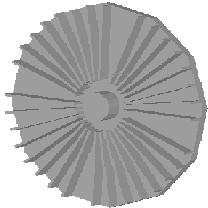

Services
Computerized thermal analysis
1.General
According to Joule Low electric energy turns in to Heat energy in any electronic equipment. Therefore, this heat energy must be evacuated to the environment with minimum loss of the temperature. Power dissipation of electronic products is rapidly growing, when their size is miniaturizing. In addition production cost restriction become tidier and tidier. All these make thermal design more and more challenging, sometimes even, almost impossible. In order to accomplish these "impossible missions" very precise optimization is needed at early stages of design process. Computational Fluid Dynamics (CFD) is an essential tool for this task.

2. Benefits.
At the beginning of the project, thermal analysis allows to estimate feasibility of the idea for thermal perspective, and choose the concept with best chances to work. At the next stages of the project the tool allows to map hot spots and treat them "personally". CFD analysis provides the possibility to examine different options of solutions without building mockups and prototypes. Design alternatives without building models.3. Input Data.

In order to run Thermal Analysis the following information is needed:
a. Mechanical structure of analyzed
product.
b. Power dissipation map
c. Thermal data of the components
d. Environmental Conditions
e. Pass/Fail criteria
Analysis precession and resolution depends on precession and resolution of input data.
4. Results.
The results of Thermal Analysis, usually represented by:

a. Temperature Maps (Surfaces and sections)
b. Fluid flow maps (Sections, Trajectories and
Particle Stadies)
c. Pressure drop maps (Surfaces and sections)
In addition numerical data can be presented as
tables and charts:
a. Components Min, Max and Average
Temperature
b. Flow rates through predefined areas
c. Working Point of the fans
d. Change of the parameters along predefined lines.
e. Change of the parameters with time in Transient regime